

Learn about the nominees for the 2023 Project of the Year Award! We are inspired by all our remarkable finalists and their outstanding service to local communities and the young people they engage.
The Project of the Year Award recognizes achievements, innovation, and impact in the Corps world. Learn more about Awards here. The winners will be recognized at The Corps Network’s 2023 National Conference, March 7 – 9. Stories are arranged in alphabetical order by Corps name.
AmeriCorps St. Louis
Greenwood Cemetery Restoration
Missouri
Supported by AmeriCorps
Greenwood Cemetery was founded in 1874 as the first commercial, non-sectarian cemetery for African Americans in the St. Louis metropolitan area. More than 50,000 African Americans are buried within Greenwood’s 32 acres. After the final burial in 1993, the property fell into disrepair. Invasive plants overtook the monuments and vines began to choke native trees. In 2016, Greenwood Cemetery Preservation Association (GCPA) recovered the site and has since made considerable improvements, reclaiming roughly 12 acres with the help of volunteers. AmeriCorps St. Louis (ACSTL) had contributed to occasional volunteer events over the years and realized an opportunity to do more.
Funded in part by a grant from the Missouri Department of Conservation, ACSTL partnered with GCPA to develop a two-phase land management plan focused on removing invasive species and beautifying the cemetery through restoring headstones and improving infrastructure. The Corps also partnered with Washington University to study the use of organic herbicides. Over the summer of 2022, ACSTL brought in a crew of AmeriCorps NCCC members to complete projects and help host numerous community volunteer events. Eight additional acres have been cleared during this collaboration, creating public green space and – most importantly – uncovering hundreds of new headstones to be documented. This work has been incredibly meaningful to the community, helping families reconnect with their heritage and relocate burial sites of their relatives.
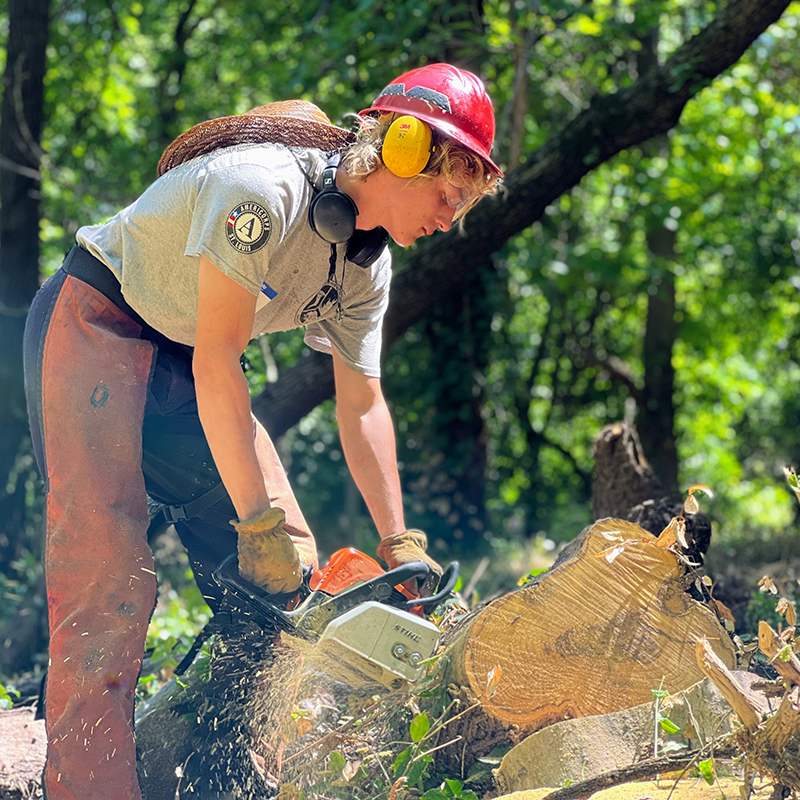
Ancestral Lands Conservation Corps, Conservation Legacy
Acoma Pueblo Water Delivery
New Mexico
Supported by AmeriCorps – The Corps Network, Opportunity Youth Service Initiative
The Pueblo of Acoma experienced a major water infrastructure failure in October 2022, leaving the entire community without access to running water. The local health clinic, dialysis center, and schools were forced to close; many people who cannot haul water faced a crisis. This is where Ancestral Lands Conservation Corps (ALCC) stepped in to help. ALCC has experience doing disaster relief projects in Flagstaff and other communities but had never previously supported crisis relief so close to home due to a lack of funding. However, with support from the Conservation Lands Foundation and private donors, ALCC crews could begin delivering potable water and other supplies to community members in need.
A crew of 10 AmeriCorps members has been serving approximately 20 households daily, averaging nearly 100 community members reached. As the Corps continues to receive funds, they plan to provide water storage containers and solar showers in addition to the water deliveries. Corps are not new to disaster relief, but these projects are almost always supported by federal or state dollars. In this situation, there was no relief funding from the federal, state, or Tribal government. Using a network of supporters and their strong relationship with the community of Acoma, ALCC was able to fill a critical need.
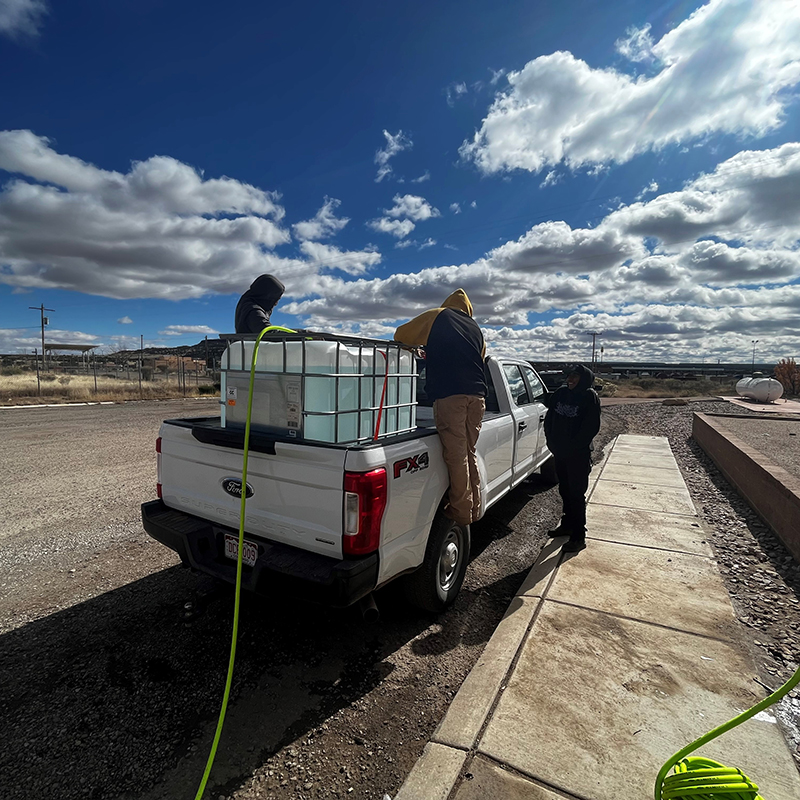
California Conservation Corps
Watershed Stewards Program
California
Supported by AmeriCorps
The California Conservation Corps (CCC) started the Watershed Stewards Program (WSP) in 1994 with a mission to improve watershed health and help bring threatened and endangered salmonid species back to strong population levels. WSP does this by placing Corpsmembers under the mentorship of scientists at environmental organizations across the state of California. Host sites include federal, state, and local agencies, as well as non-profits and Tribal entities. To promote program success, mentors receive training and are encouraged to provide not just work assignments, but leadership experience, networking, and other career-building opportunities for the Corpsmembers.
WSP Corpsmembers engage in a range of projects, including collecting and analyzing data, completing restoration projects, providing watershed education in public schools, and recruiting community volunteers to implement critical habitat maintenance projects that otherwise may not have been completed. In 2022, WSP engaged 42 Corpsmembers for the 10.5-month-long program. The members collectively received more than 140 professional development trainings, completed 917 miles of waterway monitoring, restored 27 acres of riparian habitat and 118 acres of wetland, removed 27 fish passage barriers, and restored 30 miles of in-stream habitat. A majority of WSP members continue into careers in natural resources, further their education, or serve for an additional term. Many WSP alums have become mentors at host sites, continuing efforts to restore watersheds and train a new generation of stewards.
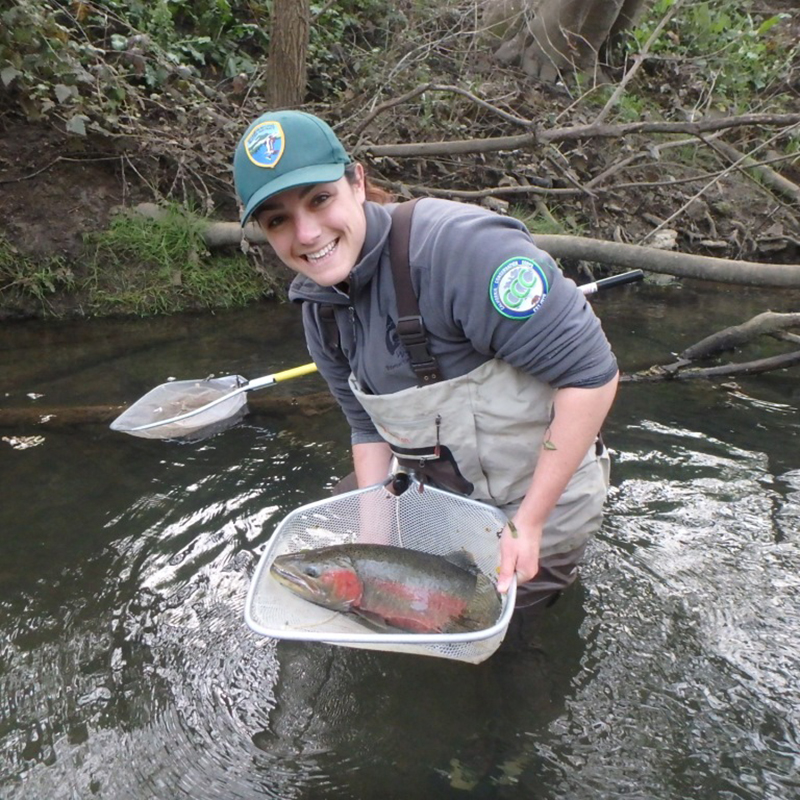
Community Training Works
Northwest Florida Endemic Species Habitat Improvement Project
Florida
Supported by AmeriCorps – The Corps Network, Education Award Program
Over the years, Community Training Works (CTW) has primarily focused on projects restoring existing trails, roadways, and other public lands infrastructure. The Northwest Florida Endemic Species Habitat Improvement Project marked only their second foray into coastal habitat restoration. It was also the Corps’ longest contract and largest budget to date. The goal of the project was to twofold: restore vital breeding ponds for the threatened Frosted Flatwoods Salamander at St. Marks National Wildlife Refuge, and restore beach nesting habitat for the threatened Loggerhead Sea Turtles and endangered Green Sea Turtles at St. Vincent National Wildlife Refuge.
Due to the scope of work, CTW adapted and expanded their training offerings. Among other topics, Corpsmembers learned about species identification, controlled burns, and seasonal pond activity; they earned certifications to operate chainsaws, ATVs and UTVS. At St. Marks, they cleared vegetation and created conditions to the support prescribed fire necessary to maintain salamander breeding sites. Areas treated by CTW members are designated for salamander larvae releases. At St. Vincent, Corpsmembers addressed years of storm damage, clearing debris and downed trees from miles of beach. Thanks to CTW’s work, St. Vincent is already seeing increased turtle activity in treated areas. This project has expanded CTW’s capacity, helped them build additional partnerships and funding, supported numerous Corps alums on the path to conservation careers, and is building a brighter, more sustainable future for at-risk, native species.
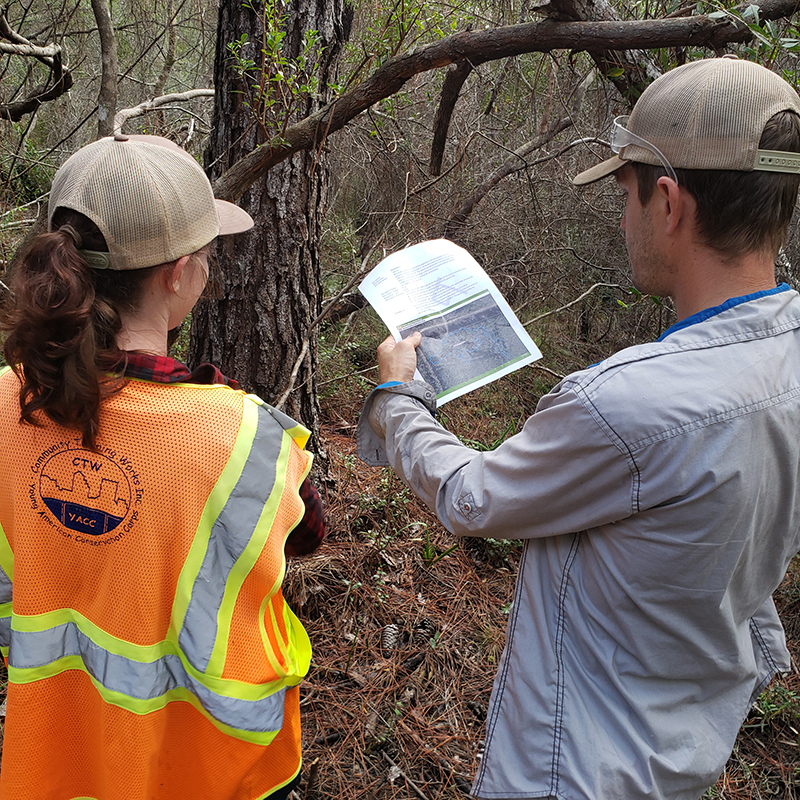
Conservation Corps Minnesota & Iowa
Rehabilitation of the Greenstone Ridge Trail, Isle Royale National Park
Minnesota
Supported by AmeriCorps
Conservation Corps Minnesota & Iowa (CCMI) has operated American Sign Language (ASL) crews since the late 1970s. The Corps has consistently run front-country ASL crews for high school students, while their Summer Youth Corps program provides returning students a chance to experience more technical back-country projects. The Corps piloted an ASL Wilderness Crew in 2009 and 2010 but has since b9een unable to host the program. In 2022, CCMI fielded a Summer Youth Corps crew with multiple Deaf or Hard-of-Hearing participants for the first time in over a decade. The crew was led by one Deaf leader, one ASL interpreter, and one Child of a Deaf Adult. The crew included one Deaf member, two Hard of Hearing members, and two hearing youth.
From July to August, the crew served in a wilderness area at Isle Royale National Park. Using only hand tools, they completed five miles of trail rehabilitation, including boardwalk construction, erosion control, sign maintenance and more. The three-leader model proved very successful. Everyone was expected to communicate in ASL; part of each day was devoted to “Hands Up” time to practice sign language. Crewmembers had an empowering and educational experience, and served as role models for first-year, front-country members. Operating this program and working with CorpsTHAT – an organization devoted to connecting the Deaf community to the outdoors – has pushed the Corps to find ways to make all their materials and programming more accessible. Most importantly, this work provides Deaf young adults a chance to explore career paths in natural resources.
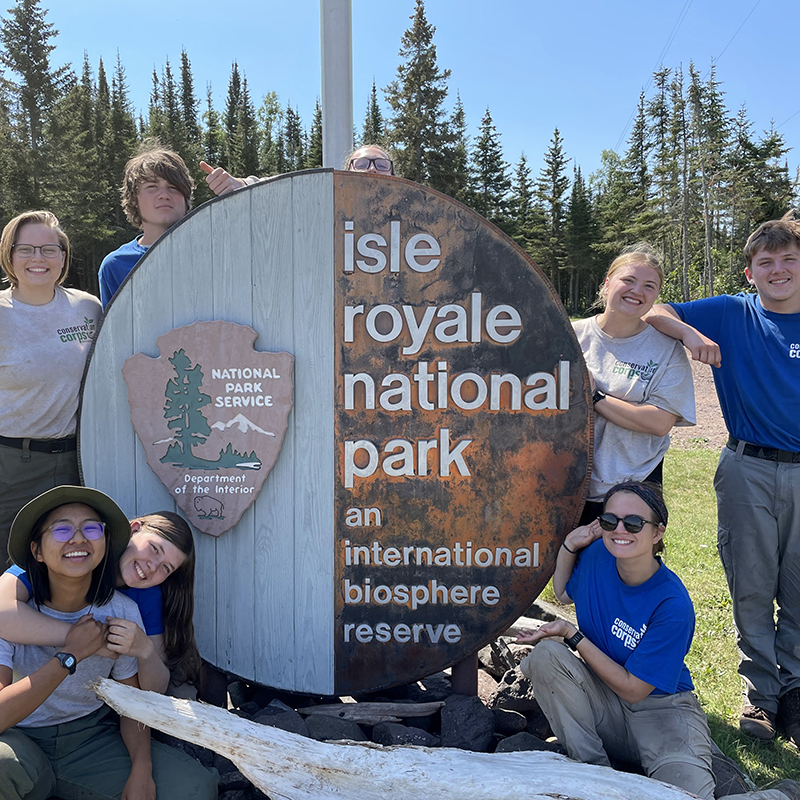
Conservation Legacy, Stewards Individual Placements
Youth Empowerment Stewards (YES) Initiative
West Virginia
Supported by AmeriCorps – The Corps Network, Education Award Program
In the Spring of 2021, Conservation Legacy launched the Youth Empowerment Stewards (YES) initiative to foster employment and skills development for people with disabilities in the field of conservation and land management. Unlike other projects seeking to help those with disabilities, the YES initiative works to create lasting change which can be implemented in any Corps or project. The YES model is meant to be a replicable way to ensure people of all abilities are able to become conservation stewards.
By the end of 2022, 12 participants will have completed their term of service through Conservation Legacy’s YES initiative. Their work has included virtual visitor engagement, to supporting ADA compliance and interpretive programming, to evaluating park ground usability, to maintenance projects, and more. Participants have shared positive reflections of their experience. One participant said of her experience, “Thank you, YES, for empowering other communities that may not always be able to come to these parks for a myriad of reasons.” Participants are now going on to get degrees in higher education or to continue Corps work. So far the initiative has engaged 23 youth who have identified as disabled and has impacted 470 adults through service. YES stewards have created 25 publications which were distributed to the public and have brought awareness to the initiative through social media. Stewards Individual Placement and Conservation Legacy see YES as an opportunity to enrich the diversity and experience of Corps work while creating equitable access to conservation and the outdoors.

Louisiana Green Corps
Louisiana Coastal Restoration Workforce
Louisiana
Louisiana is losing 24 miles of wetland each year, the effects of which are causing flooding and becoming particularly damaging to underserved populations. However, there is real opportunity to reduce social and economic inequalities through coastal restoration. Louisiana Green Corps partnered with Tierra Foundation and Common Ground Relief (CGR) in early 2022 to help restore the coastal wetland and create a “Climate Mitigation Workforce.” This workforce is being trained to understand critical threats to the coast and to gain the skills to create and operate wetland tree nurseries, as well as plant and monitor carbon sequestration projects. Members of Louisiana Green Corps planted bald cypress seedlings and performed carbon wetland monitoring in the area that protects the Greater New Orleans region from Hurricanes. For many of the Corpsmembers, this project was their first exposure to the critical natural habitats that protect and surround New Orleans.
This project was an expansion into workforce development for Louisiana Green Corps, and was larger in size and scope than any coastal restoration that Louisiana Green Corps had ever undertaken. Through the project, 135,000 acres of wetland have been identified for cypress plantings. The need for coastal restoration is great and there is much work to be done; the Corps hopes that training the Corpsmembers will give them job skills to obtain higher wage jobs in conservation, helping reduce racial economic disparity in the region.
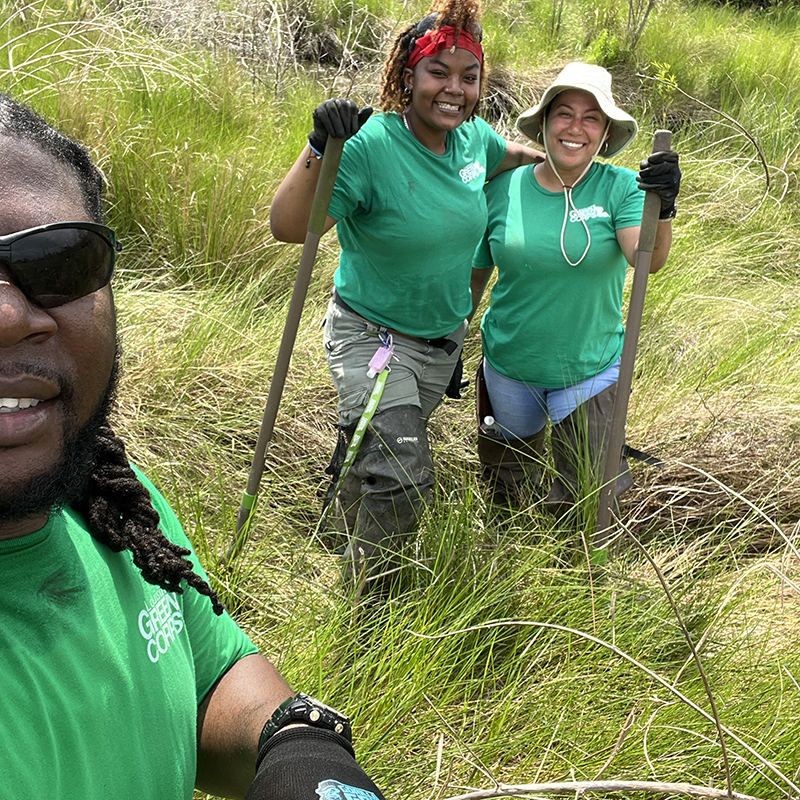
Northwest Youth Corps
Sound to Summit (S2S)
Washington
Supported by AmeriCorps – The Corps Network, Education Award Program
In 2017, Northwest Youth Corps created the Sound to Summit (S2S) program. The program seeks to give youth from diverse backgrounds opportunities to work and learn on public lands. The name of the program refers to its scope, from Pierce County’s Puget Sound to the summit of Mount Rainier. Crews are made up of local teens and young adults who meet in a central location in town each morning to do work and field education and then return home in the evening. This allows the program to be accessible to individuals who may not be able to leave their homes for weeks at a time. The last week of the program, participants move to out to the public lands surrounding the city – including such iconic sites as Mount Rainier National Park and Mt. Baker-Snoqualmie National Forest – where they do Corps work during the day and camp at night.
In 2022, Sound to Summit doubled in size, serving 40 youth in two crews in Tacoma, and added additional crews in Lakewood and Olympia. Participants earned a $1,500 stipend and had a chance to earn 1.25 high school credits. Sound to Summit exposes participants to the opportunities that outdoor careers hold and is unique in its combination of urban-based and backcountry programming. Participants learn about everything from native tree and plant identification to site design and landscape considerations. Throughout the program’s history, 106 acres of invasive species have been removed, 38 miles of trails have been maintained, and much more. The program was given the 2021 Parks Champion Award by the Metro Parks Tacoma Board of Commissioners.
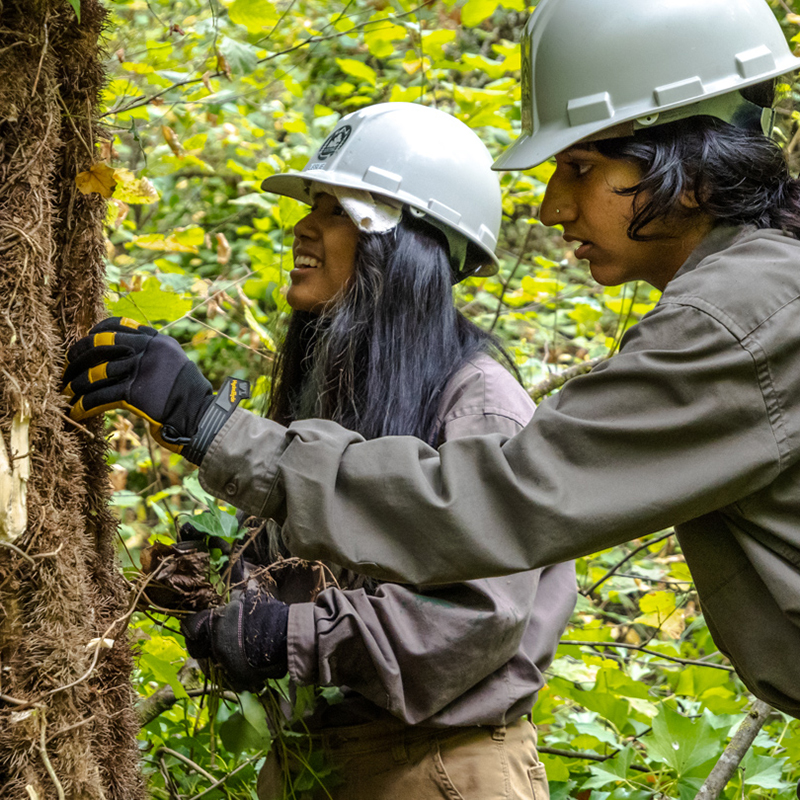
Rocky Mountain Conservancy
Deer Mountain Fuels Reduction
Colorado
Supported by AmeriCorps – The Corps Network, Education Award Program
In recent years, Rocky Mountain National Park and the nearby Estes Valley community have faced numerous wildfires and threats. To mitigate wildfire risk in the area, Corpsmembers in the Rocky Mountain Conservancy’s Conservation Corps’ Fire Crew worked alongside the National Park Service in the summer to remove massive buildups of dried fuel that accumulated in potentially disastrous locations, including Deer Mountain and the Fall River Valley. This involved the crews building “slash piles,” which are massive stacks of dried logs and sticks that are burned in the winter when the ground is covered with snow. Not only does this decrease the amount of dry vegetation that can potentially cause a fire in the future, but it also creates a clearer forest floor, which is easier for wildland firefighters to navigate through. A total of 139 massive slash piles across dozens of acres were created, and 40 buildings in Rocky Mountain National Park were treated as “defensible spaces” for wildfire prevention.
Before the addition of the Fire Crew in 2021, RMCC mostly focused on trail maintenance and construction. However, Rocky Mountain Conservancy and NPS leadership are quickly realizing the value and effectiveness of the Rocky Fire Crew, as the 7-person team in 2022 saved the Rocky Mountain National Parks’ Fire Department over $50,000 in project labor, supplies, safety equipment, training, and more. Not only that, Corpsmembers part of the project are simultaneously creating safer public lands for Coloradans while developing and using crucial wildland firefighting skills. All Corpsmembers part of the project earned numerous federally recognized wildland firefighting certifications including S-212 chainsaw safety and operations and S-130 and S-190 wildfire behavior and response certifications.
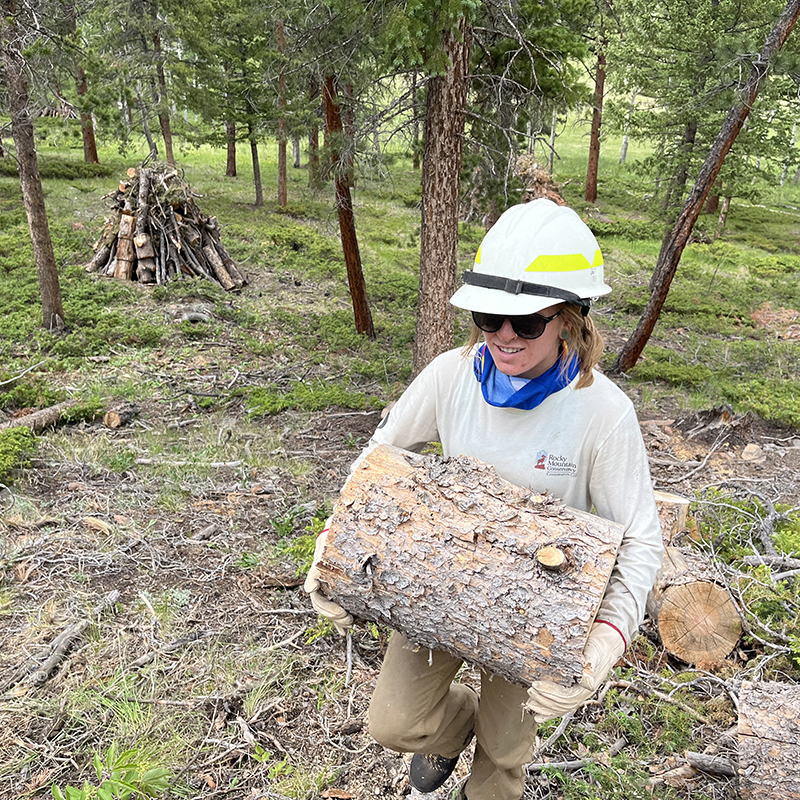
Student Conservation Association
2022 Coronado National Forest Restoration and Trails Team
Arizona
Supported by AmeriCorps – The Corps Network, Education Award Program / US Forest Service-Resource Assistants Program
For the 2022 Coronado National Forest Restoration and Trails Team project, Corpsmembers in the Student Conservation Association conducted important conservation work in the beautiful Santa Rita Mountains while partnering with the University of Arizona, Santa Rita Experimental Range and Friends of Madera Canyon. This project consisted of Corpsmembers from the AmeriCorps’ Education Award Program and the United States Forest Service’s Resource Assistants Program working for 14 weeks in a 4-person unit to assist with developing and restoring America’s oldest experimental rangeland. Specific duties included trail improvement and riparian restoration, rehabilitation of research infrastructure and biological field station, and maintenance support for already developed recreation areas. A highlight of the crew’s project, the slope restoration project in Madera Canyon was started by the 2021 maintenance team and completed by this year’s team with support from the local Tohono O’odham Nation.
In total, 3.8 acres and 4,700 feet of trails were improved, 200 native vegetation species were planted, 2 structures were built and maintained, and 300 feet of walls were retained. This project consists of various opportunities for Corpsmembers to conduct important conservation work while also connecting them to real-life, tangible work experiences and relationships that can further promote their career in conservation. Corpsmembers in this project were able to cross-train with a variety of professionals including biologists, archeologists, range scientists, and fire suppression staff. Participants also received relevant training and certifications including Wilderness First Aid + CPR, Federal Chainsaw Training, and SCA Conservation Work Skills Training. One Corspmember stated, “This SCA position has definitely prepared me for my next position.”

YouthWork
GoatWork
Michigan
Supported by AmeriCorps
In partnership with City Girls Farm and with funding from the National Park Foundation, Youth Work Conservation Corps created a new project, GoatWork, that targets invasive species in Sleeping Bear Dunes National Lakeshore. This project incorporates animal husbandry and therapy to conduct impactful habitat restoration work without the use of harmful chemicals and gas-powered tools. While operating alongside a “crew” of 20 goats for over three months, YouthWork Corpsmembers removed invasive species in Sleeping Bear Dunes through controlled conservation grazing.
Many Corpsmembers selected for this project include young people who struggle with social and emotional issues from past trauma; working with the goats provided an outlet from challenges they may face in their day-to-day lives. Although there are other programs that employ goats for conservation grazing, this project incorporates a therapeutic element into the service component for the Corpsmembers. The goats also attracted numerous visitors daily, which allowed YouthWork Corpsmembers to engage with the public and explain their work and impact. In August, YouthWork was visited by the National Park Foundation and Carhartt, and meeting the crews was a major highlight. The park also had funding to lengthen the duration of this project from 10 weeks to 16 weeks in 2023, and YouthWork will have two GoatWork crews next summer. Historic Fort Wayne and River Raisin National Battlefield Park in Detroit will attempt to recreate the successes at Sleeping Bear Dunes with their own goat crew.


































































